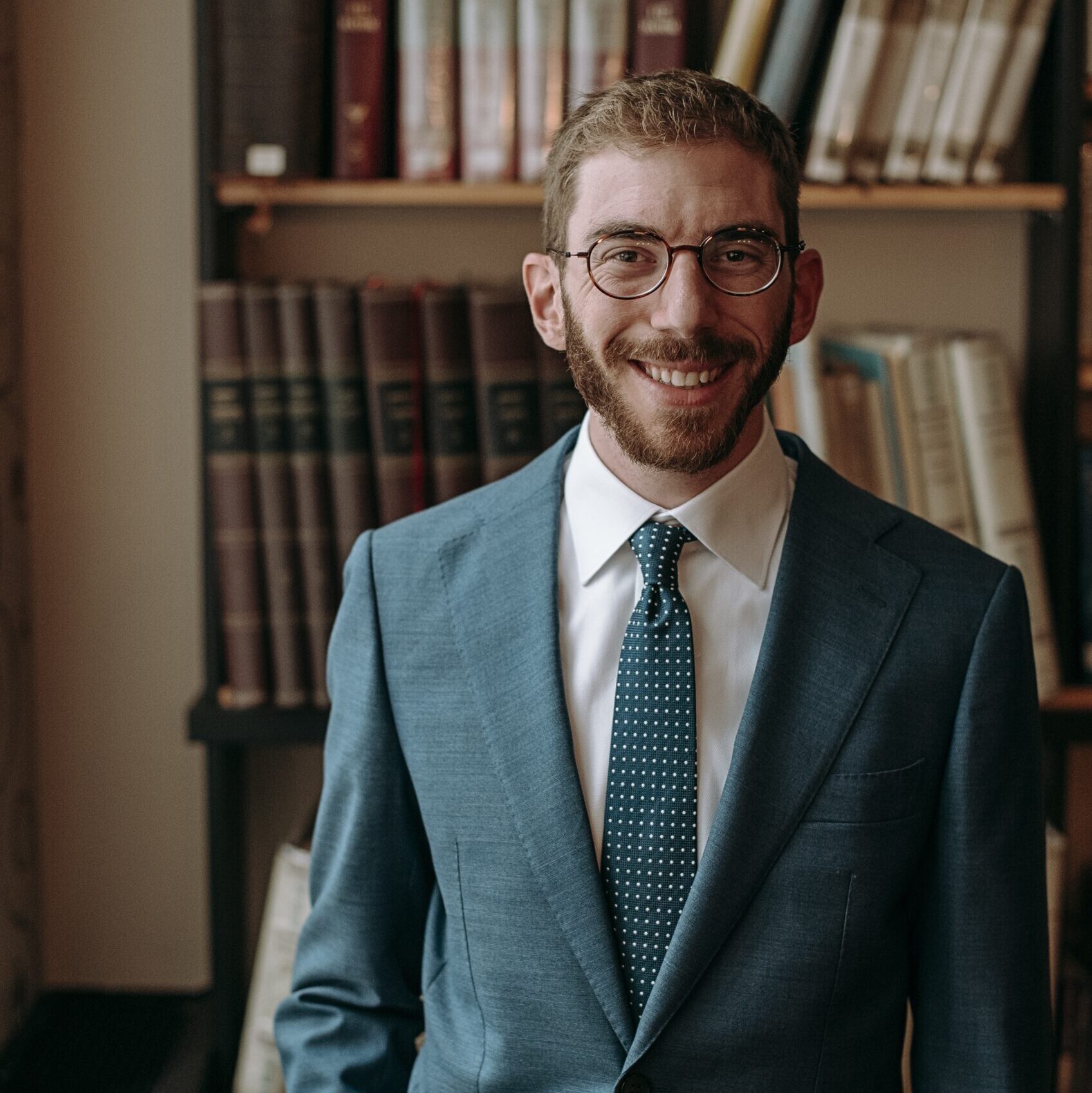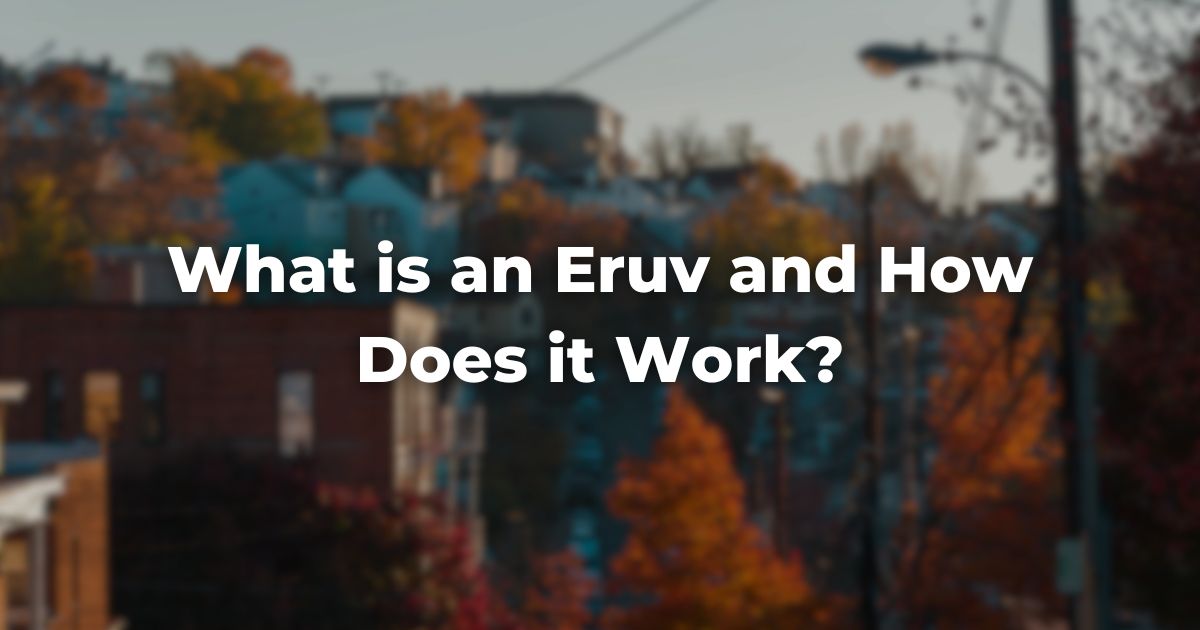An eruv is a physical structure that allows Shabbat observant Jews to carry objects in public on Shabbat. To understand it more fully, we must first understand the prohibition on carrying on Shabbat and then how the eruv affects that.
There are 39 categories of melachot, “work,” that are prohibited on Shabbat. One of those melachot is hotza’ah, which includes carrying an item between private and public domains or carrying it a distance of about 6.5 feet within the public domain. A private domain is a space surrounded by a wall so that it is treated as one unit, like a house. A public domain is an unroofed area that serves public needs, such as streets and squares.
When I spend Shabbat in a place without an eruv I need to check that I don’t have anything in my pockets when I leave where I’m staying and walk to synagogue. Not even keys or tissues.
Eruv comes from the Hebrew word for mixing and essentially “mixes” together the private and public domains included in it. It symbolically creates a wall that turns everything within it into one private domain so that things can be carried freely within its boundaries.
Without an eruv, a stroller or wheelchair could not be pushed or a child carried outside the home or synagogue. An eruv therefore serves a very important function in allowing people to easily leave their homes on Shabbat.
While it’s easy to dismiss the prohibition of carrying in public on Shabbat as a needless restriction, it is part of the system of Shabbat observance. By opting into keeping Shabbat, one is accepting all of the pieces of it, which include this prohibition. The essence of Sahbbat is resting from work, and schlepping things all over town can be viewed as part of that.
Is an eruv an actual structure?
Yes and no. An eruv is a physical boundary that symbolically creates one enclosed space. You could think of it like a fence that doesn’t actually keeping anything out but marks the property boundaries.
Essentially, an eruv is creating a boundary that represents the enclosure of a house. The eruv enclosure includes “walls” and “doors” created by using existing fences and buildings as walls, and wire strung between the tops of utility poles to represent doorposts and lintels. Unless you knew what to look for it’s not very noticeable.
An eruv could be as small as a shared courtyard between buildings or as big as a city, Any area with an eruv usually has a website or a map available so people know where the boundaries are. See the LA, Manhattan, and Miami Beach eruvin websites for examples.
But the physical structure of the eruv isn’t enough to transform the space into a private domain. To consider the enclosed area a private domain, the people within must agree to a partnership. This is done by means of jointly owned bread. Customarily, matzah is used since its long shelf-life means it can be used for a long time and a rabbi in the community sets it aside with a blessing and formula.
What is the deeper meaning of eruv?
It is easy to write eruvin (plural of eruv) off as a legal fiction designed to blatantly bypass a prohibition. But doing so ignores both the creativity of the rabbis and the beauty of the symbolism of the eruv.
As noted above, the prohibition on carrying in public on Shabbat is restrictive, particularly to women who would likely be left home watching children and people who need mobility aids. Even shared meals are harder to do. Eruvin create a way to carry while balancing the prohibition and marking Shabbat as distinct. An eruv doesn’t make it permissible to carry everywhere, just in a predefined space shared by the community.
There is a beauty to the symbolism of combining all of these separate domains into one shared private domain. We tend to spend our lives in separate bubbles, and outside on the sidewalk we maintain distance and rarely interact with each other. But generally, in our homes we are more comfortable and open. When an eruv symbolically turns a neighborhood into one home, it can change our perspective.
The shared public space that belongs to no one becomes a shared private space that belongs to everyone. The TalmudReferring to one of two collections, the Jerusalem and Babylonian Talmuds, edited in the 6th century, that contains hundreds of years of commentary, discussion, and exploration of the ideas in the Mishnah. One could describe it as Mishnah + Gemara = Talmud Read more states that Shabbat is one-sixtieth part of the world to come (Brachot 57b). It represents some level of the peace and unity that will come in a redeemed world. The eruv represents that same ideal of unity: when there are no longer divisions between each of us, and the world is one big home for everyone equally.
Author
-

Joshua Klein is a rabbinical student at The Schechter Rabbinical Seminary in Jerusalem, and previously studied at The Jewish Theological Seminary. He was a fellow in the first cohort of the Exploring Judaism's Writer's Fellowship. Joshua grew up in South Florida and before rabbinical school he worked in healthcare software in Wisconsin. Joshua has interned with synagogues in the US and Israel, with the Nativ Gap Year Program and Ramah’s high school in Israel program, and also worked as a chaplain intern at NewYork-Presbyterian Queens. While in New York, Joshua was also involved in Jewish climate activism. In his spare time, Joshua enjoys cooking, reading, writing, and wandering in museums or nature.
View all posts




